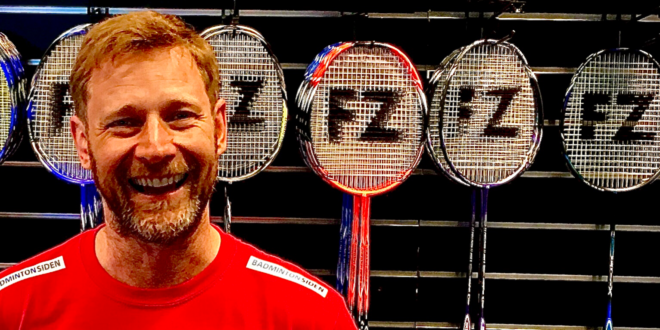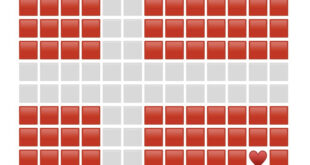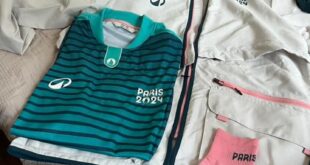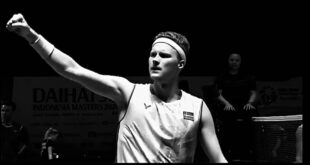![]()
By Jesper Mikla
Former elite badminton player, coach and owner of Sport-House ApS and Badmintonsiden.dk.
••••••••••••••••••••••••••••••••••••••••••••••???•••••
Reading duration: about 10 minutes
“Reading Value”: Great ❤️❤️❤️❤️
“Facts / news / info value”: Great ⭐️⭐️⭐️⭐️
(Editor’s review?)
••••••••••••••••••••••••••••••••••••••••••••••???•••••
For the last 35 years I have worked with racket sports, and through that followed the development of rackets and etc. First on my own body in elite badminton, then via Sport-House / Badmintonsiden.dk, which are specialists in badminton, tennis and paddle.
ALL EQUIPMENT IS TRIMMED
The development is going insanely fast and every year new technologies come out which the supplier hopes will be the hit of the decade. All equipment is ‘trimmed’ so that excess weight can be omitted and the equipment more and more aerodynamic to reduce wind resistance. I personally love new technologies and developments, but only to the extent that it can be used to optimize the needs of the individual player.
As one of my good friends notes with a smile on his face: “How does it help that middle-aged men give 20 000 DKK extra to make the racing bike 6 grams lighter when they themselves weigh 30 kg too much!“
One must remember to optimize on all parameters…….
And here it is that I, as a (racket) nerd, am amazed at how few care about their equipment and the preparation that lies in having to train or play matches. Maybe it’s ignorance, maybe it’s just because you do not want to spend more time on badminton. However, it would be weird if you use 6+ hours a week on something that you do not want to optimize as best as possible.
I am fully aware that perhaps none of you who read this will be a new Viktor Axelsen, but if he had not optimized in his younger days, then he would certainly have been good, but not world champion. So start today and give it the chance that is there after all. If for nothing else, you will later in (business) life be able to use that knowledge to optimize good plans/objectives.
So how can you optimize your individual games?
It’s all about preparation!
I will let you and your coaches make training plans, Schedules and etc., but make sure to always be 100% ready for the task that has to be solved. Mentally and physically.
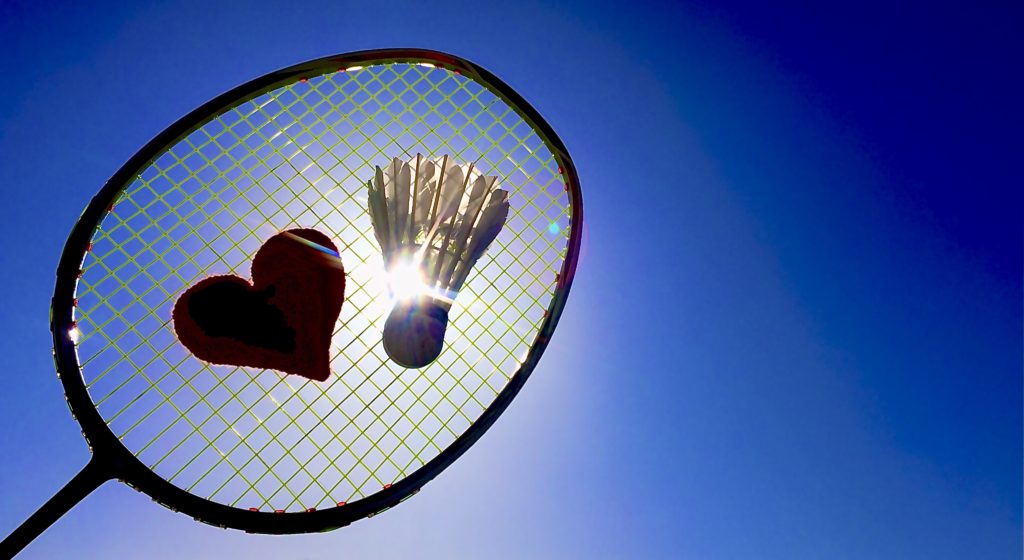
RACKET
To that extent, preparation is also in the choice of equipment. And here there are too many who just choose what they think is the prettiest or newest.
It is necessary to find the equipment that is best for you. It’s not always the newest and most expensive racket that is best for you,
Seek guidance from us experts and come and try your hand at our demo program. Then you can test the rackets in familiar surroundings on the court. Our experience is that far too many people buy rackets that absolutely do not optimize your game, but how should I know when I just buy a racket without trying more models first. And NO, standing and hitting 10 strokes with a racket is not testing it. Take it with you and play a minimum of 20 minutes under normal training/match conditions. Whether you prefer Victor, FZ Forza, RSL, Yonex or Adidas, all brands have the racket you are looking for.
And remember that you can only test your racket with a good stringing (more on this later).
We clearly recommend that you have at least 2 (preferably more) identical rackets, so you never lose a match on having to borrow one. Eliminate all excuses before the match, then you are better prepared and that in itself gives confidence.
If you play 2+ times a week, you must also be aware that your rackets must be replaced after one season. The graphite in the frame is “destroyed” by all the strokes that are being done and because of this the frame is worn out and the effect of the strokes will slowly deteriorate. In other words, you hit harder and more accurately with a new racket than a used one.
SHOES
As with rackets, the choice of shoes is an individual one, but here you cannot do a test on the court, but only in the store. However, be sure to ask our experts for advice again, as price is not always an indicator of what is best for you.
Be aware that the shoes must fit snugly and not like running shoes, where there may be 1 centimeter of air at the toes. The shoes must fit in length, as the width will give way for the foot. Always choose the one that fits the best on the foot regardless of price, and if you play more than twice a week, we definitely recommend that you buy 2 identical pairs. This means you can always train in a pair of dry shoes. Play in one pair while the other dries and then switch at the next training.
Once you have chosen the shoes, ask for heated insoles as they are made individually for you and your feet. The insoles are movable from shoe to shoe. Such a set with 2 pairs of shoes and one pair of insoles will approximately last a season, and is a must if you want to prevent injuries.
CLOTHES
Before I get to the part that I think is most important, I just want to state that in badminton there are no designed clothes that demonstrably optimize your game. There are clothes with small (ice) crystals in the neck, but there is always a reasonable temperature in halls/arenas all over the world. We cannot, as in tennis, play for 5 hours in 40 degrees (C), and therefore my recommendation is that you buy the clothes that give the best freedom of movement.
Now we have almost all the equipment in place, but still lack 2 significant factors, which, to some extent, can optimize your game, regardless of level.

STRINGING AND GRIP
Let’s start with the simplest, the grip. Whether you play with overgrip, replacement grip or towel grip, it needs to be changed much more often than what most people do today.
Always change the grip after a maximum of 6 hours of play, preferably more often. It costs so little and means so much!
If you cannot put it on yourself, find us experts and we will help you so that you can do it yourself in the future.
THE MOST IMPORTANT – STRINGING
And now to what I think is the most important thing, and what for many is a necessary evil.
But stringing is where you can optimize the most, and thus use it as a kind of ‘weapon’.
I could write 25 A4 pages about stringing, but I’ll try to be brief. However to understand the importance of stringing, here is a small example.
If your racket was a car, then the string would be the engine. And of course, a small and old engine can run, but the new, big and better engine just runs better.
Therefore, never see stringing as a duty, but as an option.
And in badminton, we are miles behind in development (and culture) compared to tennis.
Let me give you an example of this.
We restring for many of the very best badminton players in Denmark, and only a few change their strings, if they have not burst.
We also restring for many of the very best tennis players in Denmark and on average every third player restring their rackets not because they’re broken, but because they want to optimize their play. We even have a very focused athlete who gets new strings for every daily workout.
To exhibit the difference in culture (and perhaps the scientific part as well), the best tennis players in the world, Nadal, Djokovic, Federer and others, restring every time balls are changed, ie. every 9th game.
So why do they do that?
Now we need to nerd up a little bit. When a badminton racket is restrung, the string tension will be for example 12 kg. Then it might be in a bag for one day without being used. During that period, the racket loses approximately 10% of the tension. Then you train with the racket and it will lose further tension.
After 4-6 hours of play, the string tension is 70-75% of the original tension and the effect of the string is almost useless for badminton at a higher level.
We then use what is called pre-stretch, which makes the string last longer. But if you get your rackets restrung by a club mate who has a machine for under 20 000 DKK, then that function does not exist. Therefore, there is a huge difference in whether you get it done with or without pre-stretch.
Tennis players use that science to optimize their game. When they get new balls they are hard and their stringing is then similarly hard. When the ball then becomes softer due to all the strokes done, the string tension becomes softer, and therefore the hardness of the balls and the hardness of the stringing constantly match each other. Whether you play with 20 kg or 25 kg, the tension (percentage) in stringing follows the hardness of the ball.
It is such that the softer the stringing, the harder you can hit the ball (trampoline effect).
So fast tennis ball = hard stringing (less speed) and slow (soft) tennis ball = softer stringing (more speed).
We can not transfer the principle to badminton shuttles, but the example was to make you understand how a string develops.
Where I want to go is that we need to put in a lot more effort into finding the right stringing and changing it much more often.
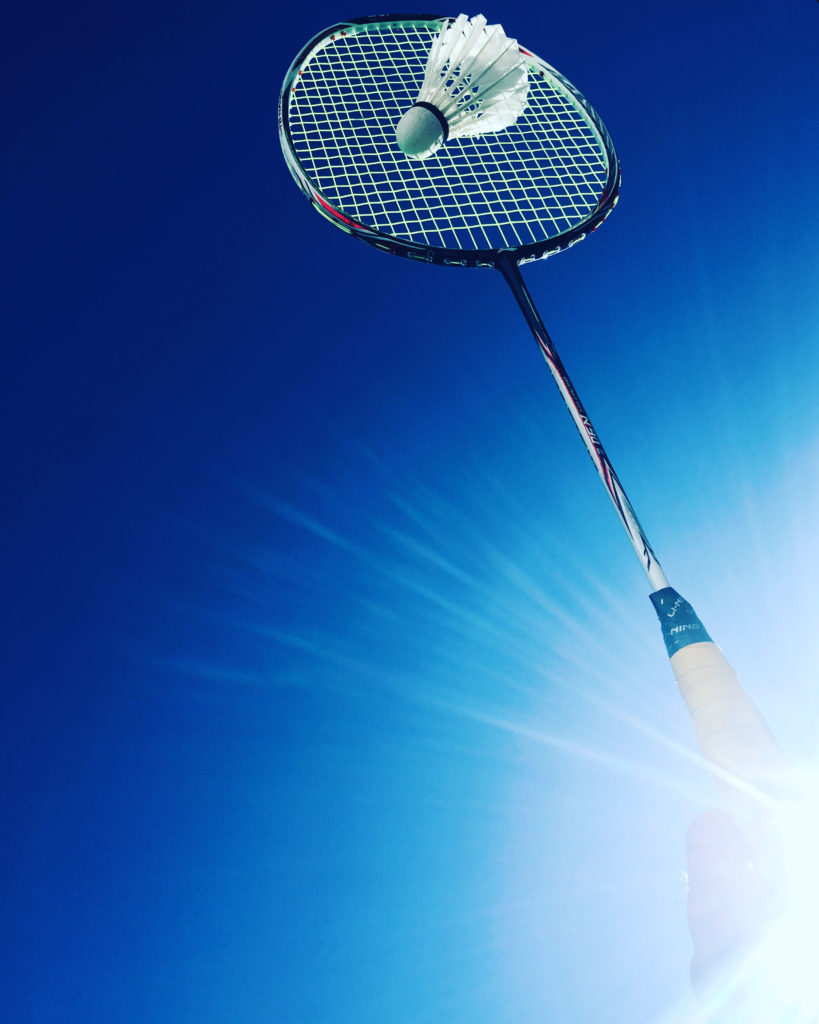
STRINGING
As mentioned, a stringing holds a usable effect for approximately 4-6 hours. And remember to test strings the same way you test rackets. Find the right string for you and then find the right tension afterwards. A thinner string should usually have less tension than a thicker string.
So what is the right string for you?
The development on badminton strings is unfortunately very small compared to Tennis. But all brands make good strings. No doubt the Yonex BG-80 is the most widely used string, but all brands have a ‘BG-80’. The big difference in the different string types is typically the thickness of the string.
As a ‘rule of thumb’, you can use the following advice: The thinner a string, the better everything (power/precision) except durability.
So here again, there is a choice to make to optimize your game.
If your player type is calm with very controlled strokes, then play with thin strings, whereas if you are a more aggressive player, then play with a little thicker strings, as there will be more unclean strokes where the string bursts up at the top of the racket.
ANDERS ANTONSEN – RASMUS GEMKE

An example from the recently concluded Denmark Open final between Anders Antonsen and Rasmus Gemke.
We restring their rackets and therefore know all about their ‘stats’. Both play with Victor strings, but Antonsen plays with a thinner string, while Gemke plays with one that’s a little bit more durable. Still, Gemke bursts the most strings, as there is a difference between playing style and ball strokes.
Both players play with very hard string tensions, which means they focus on precision. At the same time, this means that they have to hit the ball very precisely, as the racket’s sweetspot has become very small due to hard stringing. If the ball is hit just a little outside the sweetspot, then you get no speed or the desired precision, and the chance of the string bursting is far greater.
It is the fewest non-elite players who enjoy 13 kg or more!
We restring anything from 7 kg – 14.5 kg, but only you can test what is best for you and your game.
Therefore, you must again let us experts guide you to the right string.
Too few care enough about it.
We make over 50 rackets daily, and most badminton players do not know what they are getting, only that it is yellow and then 11-12 kg!
Try it out and you will be much better.
To compare with tennis, many more are responsive, want the best for them and want to pay to optimize their game.
A telling example is from an ATP tennis tournament where I was a stringer.
Tennis players travel from tournament to tournament around the world, playing on different surfaces and at different temperatures. Tennis players, unlike badminton players, do not get free strings, but pay those who have bought the event. The price is typically 23-30 euros per racket when they bring their own favorite string.
The man hands over 3 rackets to me and asks for one of 24 kg, one of 25 kg and one of 26 kg. Normally he plays 25 kg, but he just wanted to test the 3 factors that come into play – temperature, machine and the man behind the machine.
After a small hour of ’match-like’ tennis, he comes back and says that 25 kg is perfect, asks me to cut up all 3 (2 of them were not played with) and asks in the future that it is on the same machine and with the same man stringing all rackets up for that tournament. As mentioned earlier, he eliminates all the excuses.
And now you probably sit and think that tennis players also make more money than badminton players. Yes, but they do not when they are 13-16 years old. They just have a different culture that costs more, but at the same time gives their opportunities the greatest chance.
“Does that mean I get a lot better from spending more money?“
I can guarantee that you optimize your chances, that you come prepared for training/matches, and that alone should make you much better.
How you manage your training time on the court, gym or at home is up to you and your trainer. But do it with the heart. If it does not turn into World Cup gold, then it is because your skills were not enough. But you gave it a chance, and it’s (almost) just as much worth it.
You will never regret that you have optimized your equipment, your training and preparation 100%, but you will 100% regret that you did not.
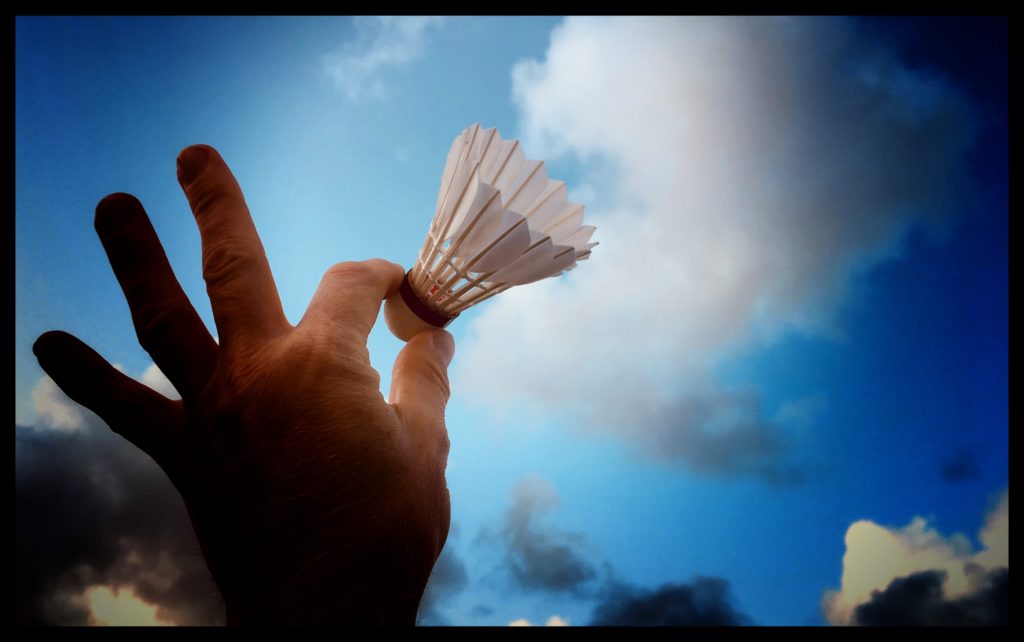
RENEWAL OF THE CULTURE
So that’s why I encourage us to push the culture of badminton a Little bit. We need to be more professional both on and off the court.
From federations, national team players to you who just want to be as good as possible.
Tests are the way forward, regardless of level.
We now have a longer involuntary COVID-19 break, so there is time and opportunity to start experimenting, so you can stand razor sharp for the new year, where we can hopefully play again without various restrictions.
Give yourself or your children the opportunity to optimize your game.
PREPARATION, PREPARATION, PREPARATION
Then you also become a winner, in badminton, at work and/or ‘just’ in everyday life
Jesper Mikla, 44, former elite badminton player, coach and owner of Sport-House ApS and Badmintonsiden.dk. Has played badminton since 1981 and worked with racket sports since 1995. Founded Sport-House in 2005, and the store and badmintonsiden.dk and today make over 15,000 restringings annually.
 BadmintonBladet flest nyheder om badminton
BadmintonBladet flest nyheder om badminton
